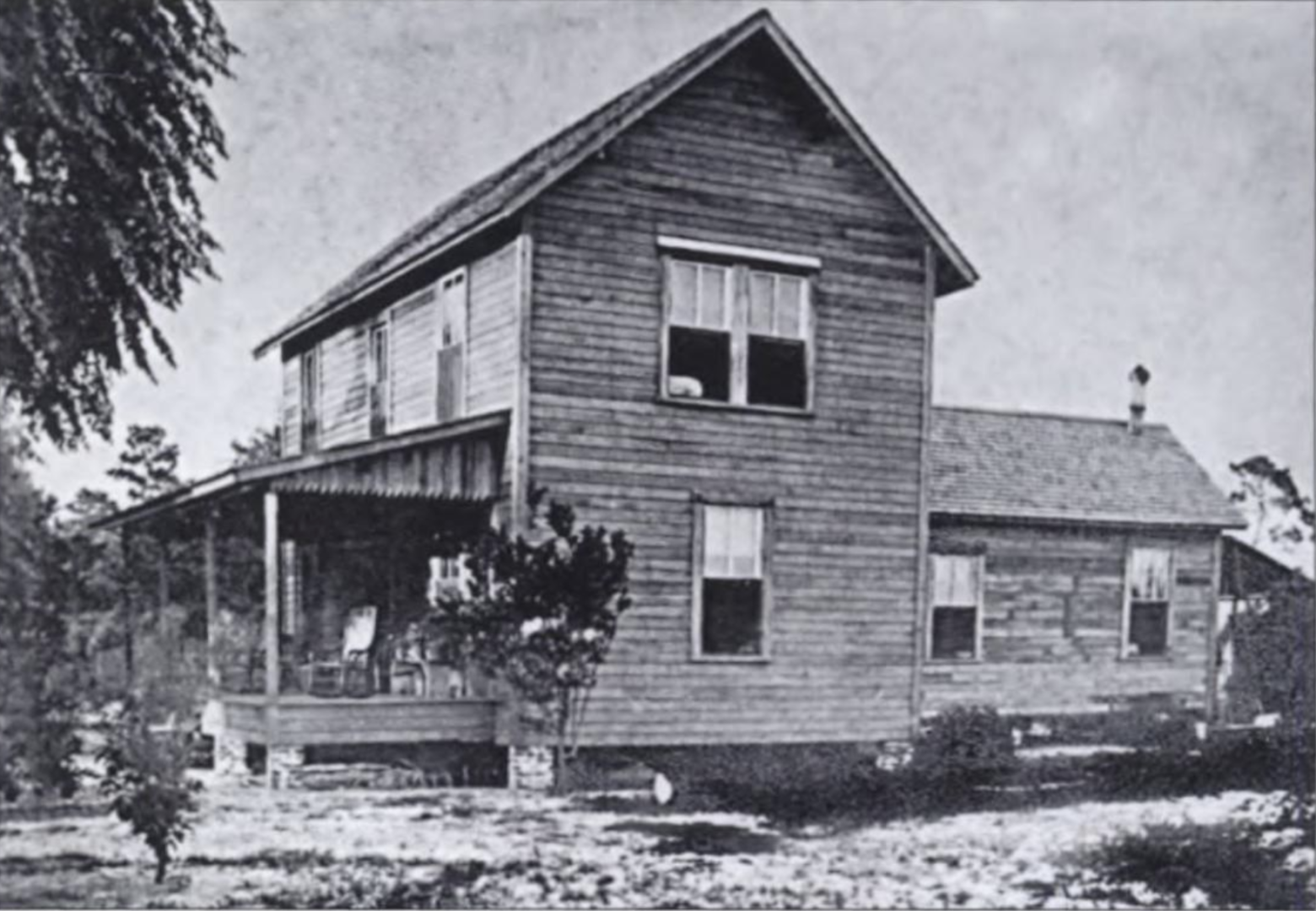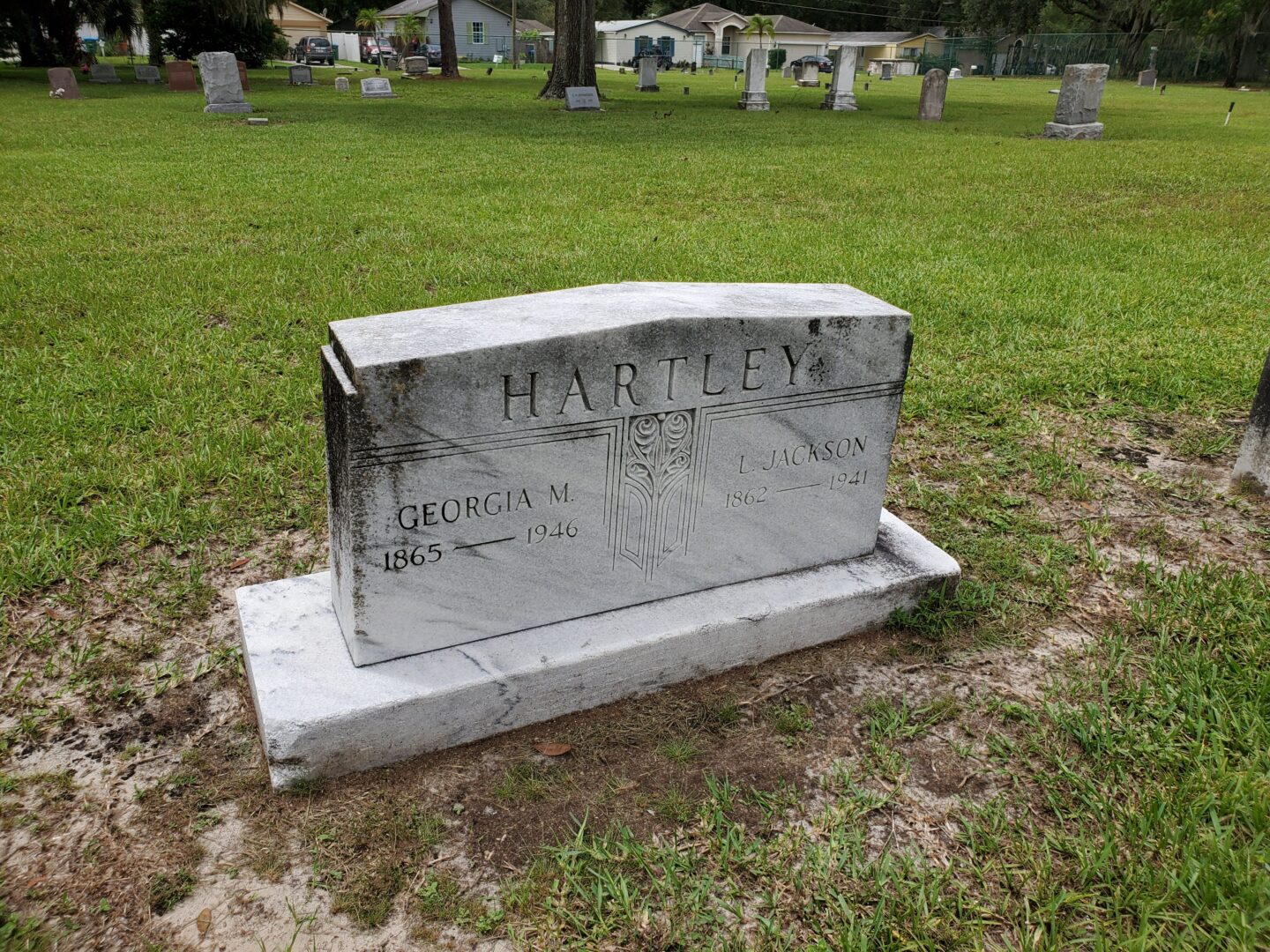
Lee Jackson Hartley, Sr. (1836-1920) settled on Fairy Lake in Longwood in December 1870. He was the first to homestead the area near Longwood. Edward Warren Henck reported that the Hartleys were the closest neighbor when he arrived in November 1872. Their home was located near what is now called the Columbus Harbor subdivision.
Lee served in the Civil War for the Confederacy. His older brother, Daniel, lived in the general area for about 20 years before Lee moved his family here. They were originally from Georgia. His son, Lee Jackson Hartley, Jr., was born in 1862 and died in 1941.

Mr. & Mrs. Lee J. Hartley and their four children had a 160-acre homestead south of Lake Wildmere and west of Fairy Lake, down to Dog Track Road. They had come to Longwood from northern Florida and planted a citrus grove of Satsuma oranges. Their land grant, dated November 30, 1878, was signed by President Rutherford B. Hayes.
In 1992, descendants found Mr. Hartley’s journals in an old abandoned desk in one of his son’s homes. The journals provide exciting insight into farming practices and prices in the area from 1888 to 1912.
In addition to orange groves, Mr. Hartley had a truck farm and ran a commissary in the 1880’s. His business was known as Fairy Lake Farm, which sold produce locally and even shipped some to New York City. The journals are now in the George A. Smathers Library archives at the University of Florida.
Some extracts gleaned from the journals include:
- On September 4, 1911, a man made 94 cents working 7.5 hours “covering peas and sprouting trees.”
- A full workday was 10 hours, and the man worked for the remainder of the month at a daily wage of $1.25, hoeing, haying, and “sprouting trees.”
- On February 28, 1912, Mr. Hartley reported shipments of oranges to New York City. He received $178.05 for 156 boxes.
- He also noted that “There is nothing in raising cotton. I sold 800 pounds a few days ago for $.05 per pound. The beauty about trucking is if you get your Irish potatoes and beans in early they will come off in time for you to plant the same ground in corn and sweet potatoes.”
- The commissary was run in connection with the truck farm. Items sold and prices but not quantities are listed. Cider was listed as $.05, $.10, $.15 and $.25. Bacon was sold for $.25 and $.31.
- The train fare to Sanford was $0.80, but it doesn’t say if that was one-way or round-trip.
- Mr. Hartley also had cattle, some of which wandered into an oncoming South Florida Train. The company was held responsible and settled for $10 to $35.
In the early 1900s, the Hartleys operated a grove maintenance business. One of the sons, William, operated a grocery store in the former bank section of the Henck-Tinker Block at the junction of S.R. 427 and Church Street during the 1930s and 1940s.
References:
